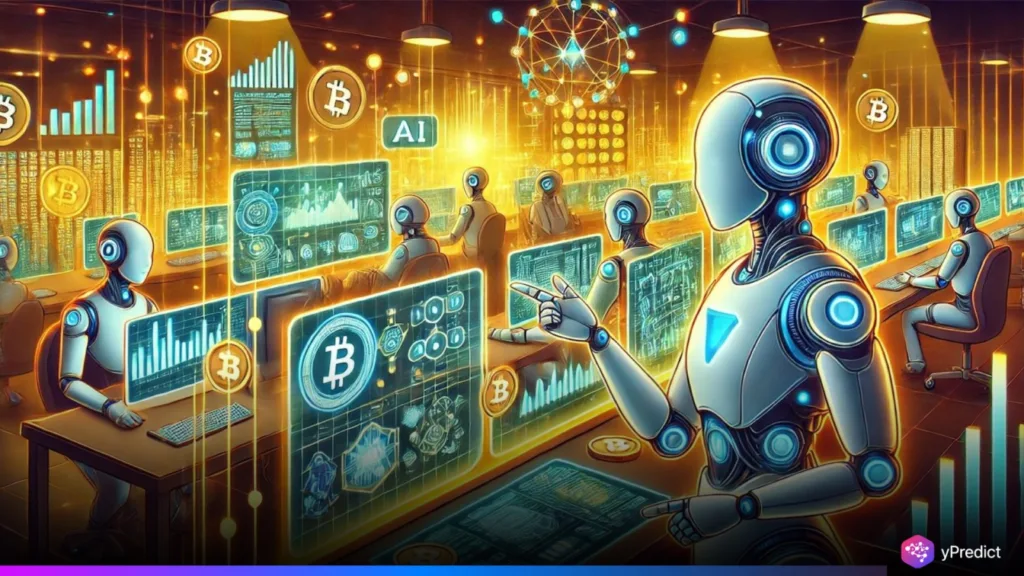
Decentralized AI is becoming a massive challenger to centralized AI, which enables the user to possess their own AI assistants on their digital wallet. As such, these AI agents will be able to complete various tasks, such as writing emails or summarizing the news, but, in contrast to traditional tools, they will also be able to earn money as people will use their computing power. The move towards independence from tech giants brings a possibility of a user-owned ecosystem where people can have increased control over data and infrastructure. The hub of this move is 0G Labs, a company creating a decentralized operating system of AI. That has received good funding and well-connected partners to champion its cause.
Decoding the Post: From Ownership to Participation
A recent post on X captures the excitement surrounding decentralized AI. The post includes a visually striking image of a panda in an astronaut helmet. Paired with the slogan “Build the Future of Decentralized AI.” It describes a world where AI assistants can live inside users’ wallets. Operate on open-source infrastructure, and compensate users when their processing power is utilized. This idea is a departure from today’s standard model, where AI is a service offered by major tech companies like Google and OpenAI. Instead, it promotes an ecosystem where the infrastructure, intelligence, and rewards are all distributed.
0G Labs, the company mentioned in the post, is working to make this concept a reality through its decentralized AI operating system known as deAIOS. The system is being designed as a modular chain that facilitates large-scale, secure AI computation. The company’s Newton testnet has already seen millions of transactions and participation from thousands of validators. With a $40 million seed round, a $250 million token fund, and collaborations with partners like Spheron Network. 0G Labs is aiming to redefine how AI operates on the web. If successful, users will not just interact with AI; they will own, govern, and profit from it.
Inside 0G Labs: Strengths, Risks, and the Bigger Picture
0G Labs has positioned itself as a trailblazer in decentralized AI. Its deAIOS architecture relies on a high-performance Data Availability layer that can move data at speeds up to 50 gigabits per second, supporting the heavy demands of modern AI workloads. Built on decentralized storage and compute networks, it allows AI models to run at scale without relying on centralized cloud infrastructure. This technical framework is matched by financial momentum. Since late 2024, the company has raised more than $325 million, including $30 million through a community-driven node sale. Additionally, its Ecosystem Growth Program is injecting $88 million into community initiatives to expand infrastructure and accelerate adoption.
The promise of decentralized AI lies in several factors. Empowers users with ownership of their data and AI tools. That enhances privacy by allowing local or distributed data processing. It introduces an entirely new economic model where users earn for contributing computing power. It also boosts system resilience by eliminating single points of failure. Most importantly, it invites open collaboration and innovation by removing proprietary restrictions. However, the road forward is not without barriers. Scalability remains a concern, as distributed systems can struggle to match centralized performance. Building and maintaining decentralized networks requires specialized technical knowledge, which may limit participation.
What Comes Next: Navigating Promise and Uncertainty
The decentralized vision of AI, in which users get to command their own assistants and enjoy communal infrastructure, is not a dream anymore; it is becoming a reality, built by such companies as 0G Labs. The trend they are taking indicates whereby future use of the world is not access-based, but it is ownership-based, and transparency pays off over the lack of it. Nevertheless, there are still very important questions. Are such systems resiliently scalable? Will they encourage or endanger their development? And, of utmost concern, will there be a jump in users? In the process of the evolution of these projects, there is a possibility that hybrid forms that will combine decentralization and centralized efficiency will become a middle ground between the two.






